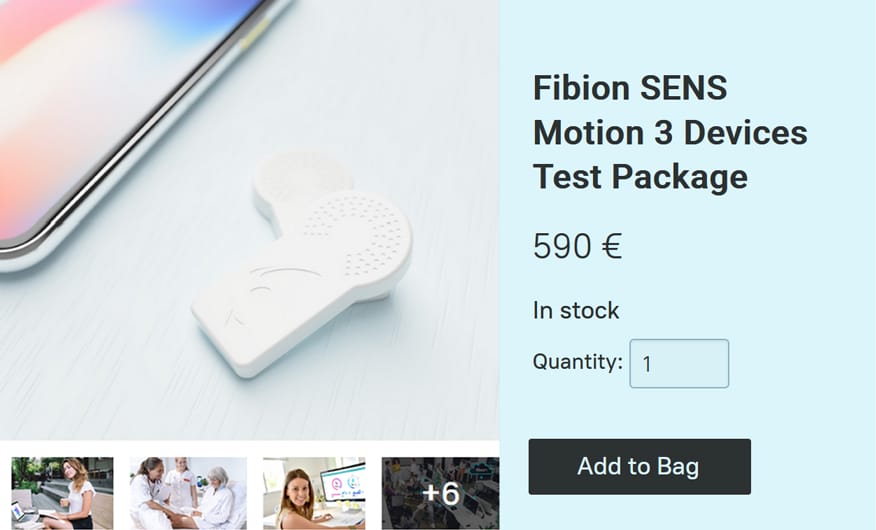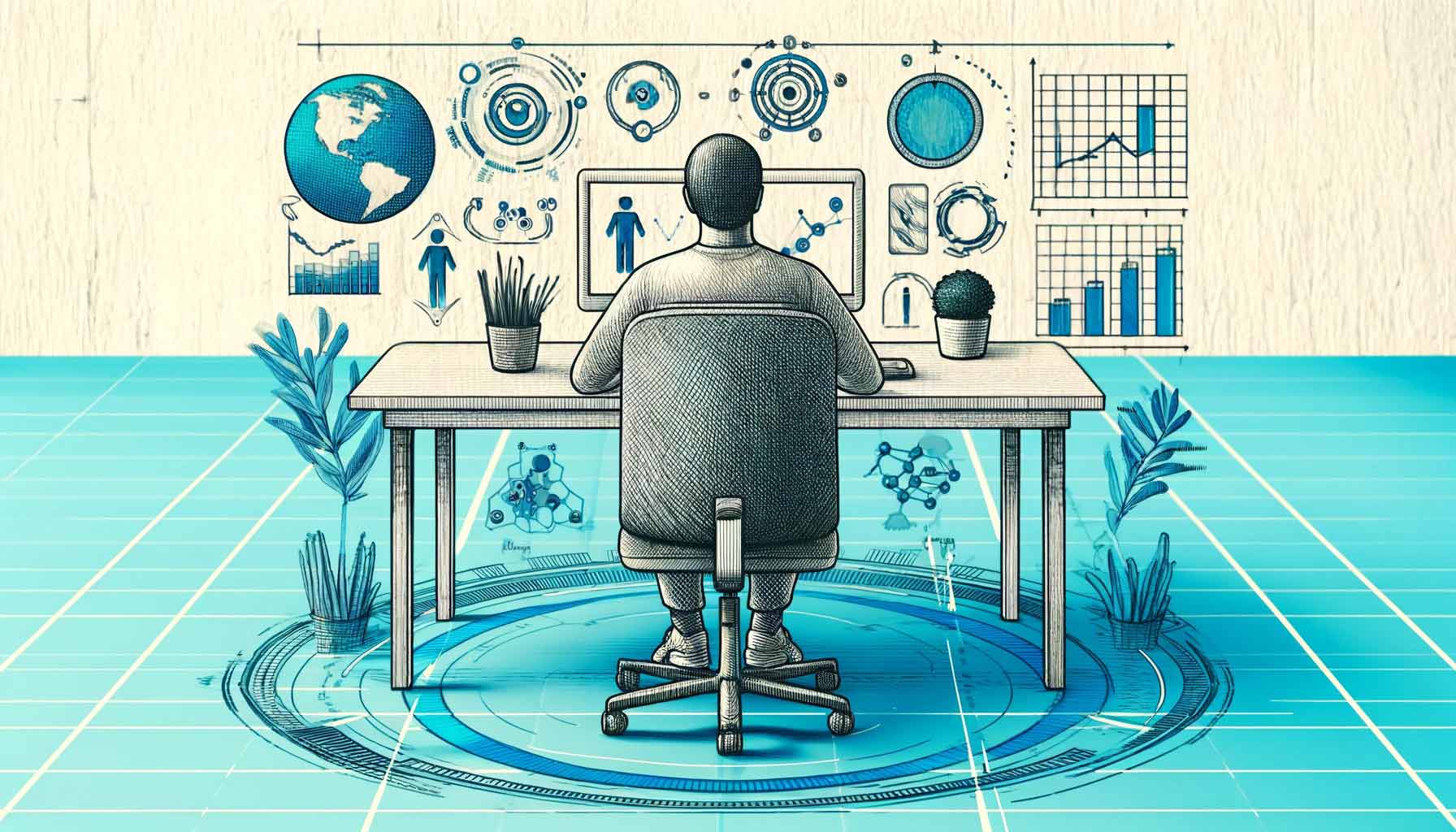1. Introduction
In this article, we explore how machine learning and AI algorithms provide valuable insights into sedentary behavior. These technologies help researchers analyze complex data sets, offering a clearer understanding of the health impacts of sedentary behavior. We will highlight four real-world examples of AI applications in this area.
AI’s role in analyzing sedentary behavior involves processing large amounts of data from various sensors and devices. These algorithms can:
- Identify Behavior Patterns: Track sedentary behavior over time.
- Classify Activities: Differentiate between types of sedentary activities, such as watching TV or desk work.
- Detect Subtle Changes: Recognize minor changes in behavior that may indicate health risks.
This analysis is essential for developing strategies to mitigate the negative health effects of prolonged inactivity.
“AI helps identify patterns of sedentary behavior, crucial for targeted health interventions.”
2. Real-World Applications and Scientific Studies
2.1. Classifying Sedentary Activities with Wearable Sensors
Study: Farrahi et al. (2024)
Outcome: This study used machine learning to classify different sedentary activities using data from wrist-worn sensors. The approach achieved a high degree of accuracy in distinguishing between various sedentary behaviors.
Significance: The detailed activity logs provided by this study can help design more effective interventions to reduce sedentary time.
2.2. Monitoring Sedentary Time in Office Workers
Study: Eliasz Kańtoch (2018)
Outcome: This study developed a method for the automatic recognition of sedentary behavior using wearable sensors and machine learning analysis during activities of daily living. The approach focused on telemedical assessment of cardiovascular risk and achieved high accuracy in identifying sedentary behavior patterns.
Significance: The findings demonstrate the potential for continuous monitoring of patient activities in a free-living environment, which could be used for early detection of increased cardiovascular risk.
2.3. Worker Perspectives on Incorporating Artificial Intelligence into Office Workspaces
Study: Fukumura et al. (2021)
Outcome: This study explored office workers’ views on incorporating AI into their workspaces. Through six focus group interviews with 45 participants, the study identified two primary constructs: preferences and concerns about interacting with AI technology and the dualistic nature of data collection for behavior change versus privacy concerns. The findings indicated that the acceptability of AI in the workplace is complex and depends on the balance between benefits and potential detriments.
Significance: The research provides valuable insights for designing AI systems in office environments that accommodate diverse worker needs and improve both health and productivity.
2.3. Classifying Physical Activity in Free-Living Preschool Children
Study: Ahmadi et al. (2020)
Outcome: This study evaluated the accuracy of Random Forest (RF) activity classification models for preschool-aged children using free-living accelerometer data. The models, trained on data from wrist and hip accelerometers, were assessed for their ability to classify physical activity into various categories. The inclusion of temporal features and shorter prediction windows improved classification accuracy.
Significance: The findings highlight the potential for accurately monitoring young children’s physical activity in real-world settings, aiding in early interventions promoting physical health.
“Machine learning offers detailed insights into sedentary behavior, essential for creating effective interventions.”
3. Conclusion
AI is proving to be an invaluable tool in understanding and addressing sedentary behavior. By providing detailed analysis and identifying behavior patterns, AI supports the development of personalized and targeted interventions. As AI technology advances, its applications in health research will continue to grow, offering more sophisticated tools to combat sedentary lifestyles and improve public health outcomes.
References
- Kańtoch, E. (2018). Recognition of Sedentary Behavior by Machine Learning Analysis of Wearable Sensors during Activities of Daily Living for Telemedical Assessment of Cardiovascular Risk. Sensors, 18(10), 3219. Read more
- Farrahi, V., & Rostami, M. (2024). Classifying Sedentary Activities with Wearable Sensors. Journal of Advanced Sensor Systems and Biomedical Data. Read more
- Fukumura, Y. E., Gray, J. M., Lucas, G. M., Becerik-Gerber, B., & Roll, S. C. (2021). Worker Perspectives on Incorporating Artificial Intelligence into Office Workspaces: Implications for the Future of Office Work. International Journal of Environmental Research and Public Health, 18(4), 1690. Read more
- Ahmadi, M. N., Pavey, T. G., & Trost, S. G. (2020). Machine Learning Models for Classifying Physical Activity in Free-Living Preschool Children. Sensors, 20(16), 4364. Read more
For more insights into sedentary behavior analysis using AI, explore our comprehensive article on sedentary behavior and physical activity measurements here.
You Might Also Be Interested
🚀📊 Learn more about how Fibion SENS can help you measure physical activity and sedentary behavior in your projects!
🔍 Elevate your project with Fibion SENS Motion 3 Devices Test Package for precise activity analysis. Order now for hands-on experience and comprehensive insights.

📅 If you want to learn more about Fibion SENS, do not hesitate to book a video call with our expert Dr. Miriam Cabrita.

🔍 You may also discover other valid and reliable products in our portfolio, such as the Fibion Device, Fibion Sleep, Fibion Mimove, Fibion Vitals, Fibion Emfit, and Fibion Circadian, all designed to assist in research measuring physical activity, sedentary behavior, and sleep.
Frequently asked questions:
What is the role of AI in sedentary behavior research? +
AI processes large amounts of data from sensors and devices to analyze sedentary behavior. It helps identify behavior patterns, classify activities, and detect subtle changes that may indicate health risks.
How does AI classify sedentary activities? +
AI classifies sedentary activities by analyzing data from wearable sensors, such as wrist-worn devices. It can differentiate between activities like watching TV and desk work, providing detailed activity logs.
Can AI detect health risks associated with sedentary behavior? +
Yes, AI can detect subtle changes in sedentary behavior patterns that may indicate health risks. It helps in providing personalized health recommendations to mitigate risks like obesity and cardiovascular disease.
What are some real-world applications of AI in sedentary behavior research? +
AI has been used to classify sedentary activities, monitor sedentary time in office workers, assess health risks, and analyze sedentary behavior in children. These applications provide valuable insights for developing effective interventions.
How does AI improve interventions for reducing sedentary behavior? +
AI improves interventions by providing detailed analysis and identifying behavior patterns. This supports the development of personalized and targeted strategies to reduce sedentary time and promote physical activity.
What future advancements can be expected from AI in sedentary behavior research? +
As AI technology continues to advance, its applications in sedentary behavior research will grow. Future advancements may include more sophisticated tools for analyzing behavior, leading to better health interventions and improved public health outcomes.















